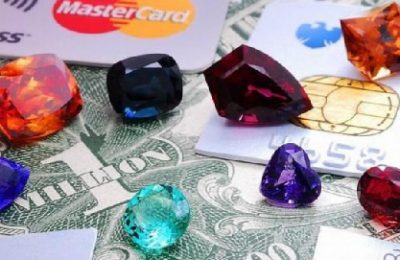
Demantoid is a rare type of green garnet. Its name is derived from the German word Demon – “diamond”, and the Greek prefix denoting similarity. An unusual stone was discovered in 1874 on the Bobrovka River in the Middle Urals. Because of this, it was also called Bobrovsky garnet, Ural emerald or Russian chrysolite. For a long time, green pomegranates were mined only in Russia.
Demantoid colors
Demantoids are green garnets. The palette of shades includes:
- golden yellow;
- honey;
- marsh green;
- emerald green.
The green color of the stone is explained by the presence of iron oxide and chromium in its structure. Those specimens that have a yellowish tint contain titanium impurities. The higher the concentration of impurities, the brighter the color of the demantoid.

To get rid of brown shades, to achieve a brighter green hue or to make it lighter, demantoid is subjected to low-temperature processing. The fact of refinement must be indicated when the copy is sold.
Fibrous inclusions are sometimes found in demantoiods, which create a “cat’s eye” effect. There are also stones with golden sparkles.
Properties
On the Mohs scale, the hardness of demantoid, like other garnets, is 6.5 points. This means that the mineral is capable of scratching glass, but can be processed with a diamond tool.
Average density – 3.8-3.9 t / m3. Demantoid is characterized by a high variance of 0.057. It is almost twice as high as that of other garnets, which provides an unusually bright refraction. It is sometimes said that the play of light on the edges of a demantoid is not inferior to a diamond.

Place of Birth
Demantoid is rare and is mined only in Russia. The first deposits were discovered in 1874 near Yekaterinburg.
The largest developments were carried out at the beginning of the twentieth century, while the maximum production did not exceed 104 kg. There are also deposits near Nizhny Tagil and in Kamchatka. Demantoid is not the only green garnet.
In Namibia, a stone is mined that is almost identical in appearance and properties, but the Ural specimens are valued higher. In 2009, green grenades were discovered in Madagascar.

Where is used
Demantoids were very popular at the end of the 19th century. Particular attention was drawn to them at the World Exhibition held in Paris in 1889.
Since then, green garnets have been used to create complex, highly artistic works, where they perfectly coexist with diamonds, sapphires and pearls. But on the mass market, they are rare – due to their rarity and relatively high cost.
Demantoids are usually given a brilliant cut – round, with 57 facets. It allows you to reveal all the richness of the play of light inherent in this stone. Other forms are less commonly used – “emerald”, “baguette”, “heart”.

How to distinguish from a fake
Demantoid can be confused with other gems:
- chrysolite;
- grossular;
- tourmaline;
- emerald.
Thus, it can either act as an inexpensive imitation itself or be imitated with a cheaper stone.
Demantoid is rarely forged on purpose: it is not so well known to expect commercial benefits from counterfeiting. Sometimes you can confuse a natural stone and a green cubic zirconia similar to it, but more often it happens by accident.
Care rules
Demantoid jewelry should be cleaned as it gets dirty. To do this, use warm water with a couple of drops of detergent added.
It is better to use warm water, as chemical reactions are more active in it, and fatty contaminants break down faster. After washing, rinse the jewelry in clean water and leave to dry on a towel.
Demantoids do not like:
- steam cleaners and any heat treatment;
- toothpaste and hard toothbrushes;
- bleaches and other harsh chemicals.
You need to store jewelry with demantoids wrapped in a soft cloth – cotton, velvet or silk. It is important that they do not come into contact with other products, otherwise scratches will remain on the surface.

